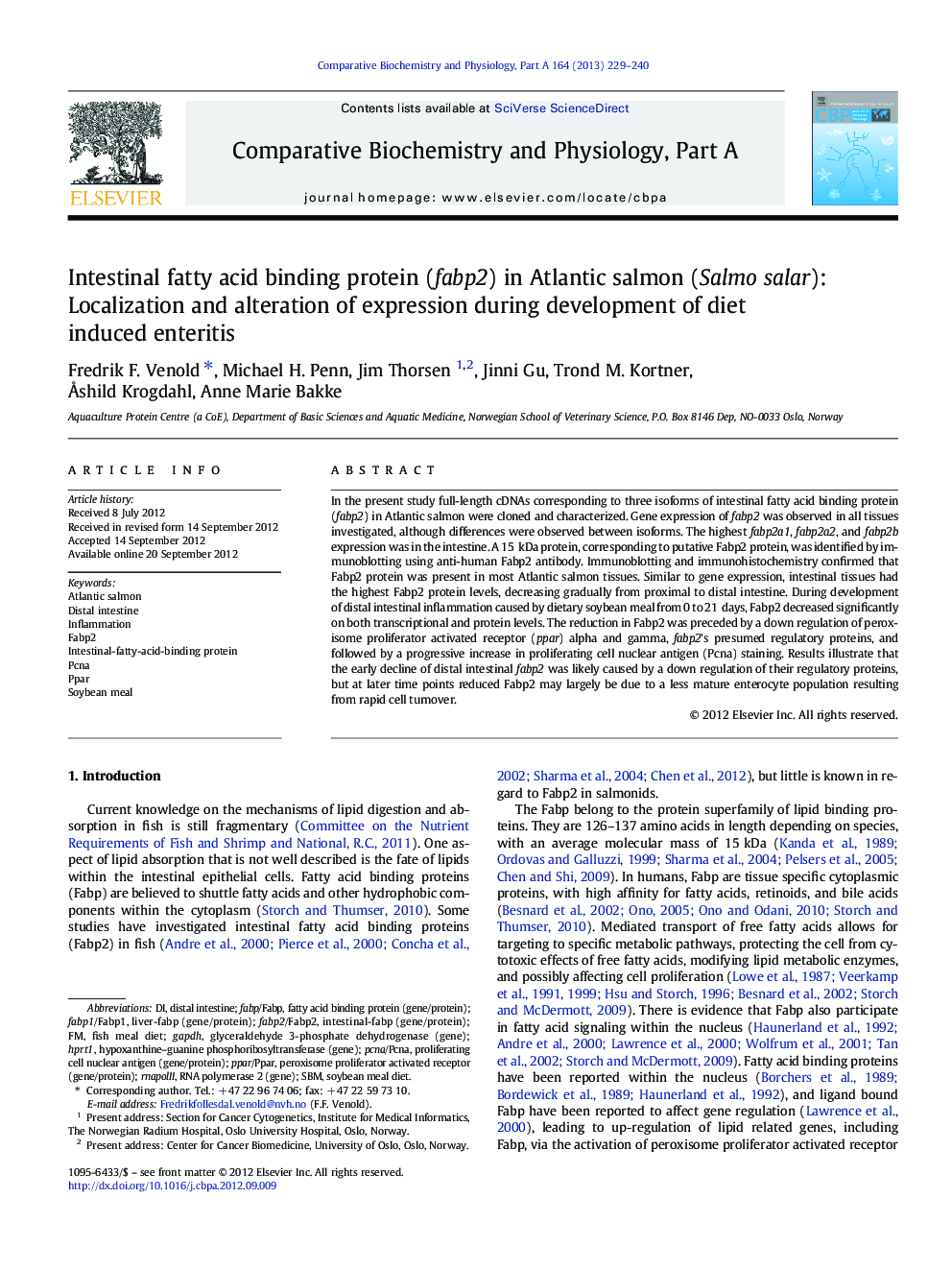| Article ID | Journal | Published Year | Pages | File Type |
|---|---|---|---|---|
| 10818975 | Comparative Biochemistry and Physiology Part A: Molecular & Integrative Physiology | 2013 | 12 Pages |
Abstract
In the present study full-length cDNAs corresponding to three isoforms of intestinal fatty acid binding protein (fabp2) in Atlantic salmon were cloned and characterized. Gene expression of fabp2 was observed in all tissues investigated, although differences were observed between isoforms. The highest fabp2a1, fabp2a2, and fabp2b expression was in the intestine. A 15Â kDa protein, corresponding to putative Fabp2 protein, was identified by immunoblotting using anti-human Fabp2 antibody. Immunoblotting and immunohistochemistry confirmed that Fabp2 protein was present in most Atlantic salmon tissues. Similar to gene expression, intestinal tissues had the highest Fabp2 protein levels, decreasing gradually from proximal to distal intestine. During development of distal intestinal inflammation caused by dietary soybean meal from 0 to 21Â days, Fabp2 decreased significantly on both transcriptional and protein levels. The reduction in Fabp2 was preceded by a down regulation of peroxisome proliferator activated receptor (ppar) alpha and gamma, fabp2's presumed regulatory proteins, and followed by a progressive increase in proliferating cell nuclear antigen (Pcna) staining. Results illustrate that the early decline of distal intestinal fabp2 was likely caused by a down regulation of their regulatory proteins, but at later time points reduced Fabp2 may largely be due to a less mature enterocyte population resulting from rapid cell turnover.
Related Topics
Life Sciences
Biochemistry, Genetics and Molecular Biology
Biochemistry
Authors
Fredrik F. Venold, Michael H. Penn, Jim Thorsen, Jinni Gu, Trond M. Kortner, Ã
shild Krogdahl, Anne Marie Bakke,
